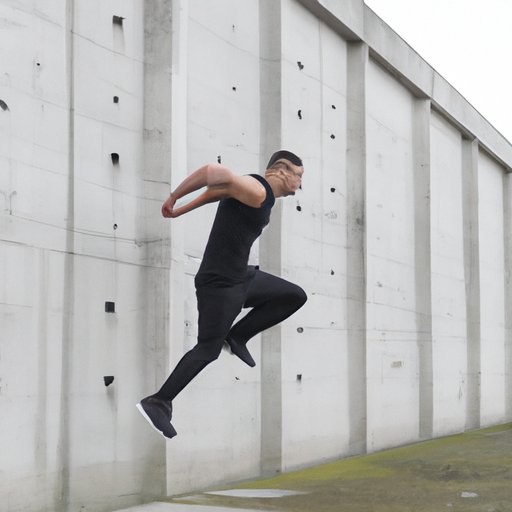

Introduction
Improving your jumping ability can take your athletic performance to the next level, regardless of the sport you pursue. Whether you are a basketball player trying to master slam dunks or a fitness enthusiast looking to broaden your workout routine, jumping higher requires dedicated effort and strategic training. Not only does jumping higher boost your overall fitness and athletic prowess, but it also helps reduce the risk of injury. In this article, we will explore foundational exercises, plyometric training techniques, proper form, nutrition, and other key tips for improving your jumping ability.
Foundational Exercises for Improving Jumping Ability
Building up strength and muscle in the lower body is the cornerstone of enhancing your jumping ability. Here are some foundational exercises that can help you get started:
1. Bodyweight Squats: Stand with your feet shoulder-width apart, then bend your knees to lower your body into a squat position. Be sure to keep your back straight and your core engaged. Repeat for several reps, gradually increasing the number of repetitions as your strength and endurance improve.
2. Lunges: Stand with your feet hip-width apart, take a big step forward with one foot while keeping the other foot in place. Bend both knees until they form right angles, then push off with the front foot to return to standing position. Repeat on the opposite side. As with squats, work on increasing the number of reps over time.
3. Calf Raises: Stand on the balls of your feet, then slowly lift your body weight up towards the ceiling, holding for a moment at the top before lowering back down. Repeat several times.
Plyometric Training Techniques
Plyometrics is a type of high-intensity jump training that can help you build explosive power and speed. Here are some specific exercises you may want to try:
1. Jump Training: This exercise involves jumping as high as you can with both feet, then quickly returning to the ground and repeating the jumps in quick succession. You can also try single leg jumps or jumping over obstacles.
2. Box Jumps: Stand in front of a sturdy box or bench, then jump up onto it. Once you land securely on the box, jump back down and repeat. Gradually increase the height of the box as your strength and confidence improve.
3. Depth Jumps: Stand on a platform or step, then step off and land on the ground. As soon as your feet hit the ground, jump up as high as possible. This exercise builds explosive power and is excellent for developing quick reflexes.
It is important to take precautions while undertaking plyometric training. Without proper form or technique, plyometric training can result in injuries. Ensure that your body is ready for these exercises so as to avoid strain or sprains.
Improving Jumping Form
Common mistakes in jumping form can hold you back from achieving the height and distance you aim for. Here are some suggestions to help you get your form just right:
1. Use a mirror or enlist the help of a trainer to observe your jump and provide feedback on your form.
2. Focus on keeping your chest up, your back straight and your core engaged. This will help you maintain balance and generate more upward momentum.
3. Mastering your landing technique is important as well. Always land on the balls of your feet or mid-foot to reduce the impact of landing. As you land keep your knees bent, and your core strong to absorb the landing shock.
Nutrition and Hydration for Jump Training
Eating the right foods and staying hydrated is crucial when it comes to optimizing your jump training. Here are some suggestions:
1. Be sure to consume enough protein to support muscle repair and growth. This nutrient can be obtained from sources like lean meats, eggs, nuts and beans.
2. Carbohydrates are essential for providing energy for workouts. Focus on consuming complex carbohydrates such as whole grains, fruits and vegetables instead of simple sugars.
3. Drinking enough water is crucial for keeping your body hydrated and energized during exercise. Avoid energy drinks and other sugary beverages that can create an energy spike and subsequent dip during your workout.
Maximizing Training Efforts
To get the most out of your jump training, be sure to take rest and recovery seriously. Other strategies that can help you improve your performance include:
1. Get enough sleep to allow your body time to recover and regenerate. Adequate rest is demonstrated to be crucial for muscle growth, recovery and helps avoid injuries.
2. Invest in proper footwear: Choosing the right shoes helps reduce the risk of injury and assists in maintaining good form.
3. Track your progress over time by measuring your jump height or repetitions. This way, you can see improvement and tailor your training accordingly.
Conclusion
Improving your jumping ability takes time, dedication, and a comprehensive approach to training. With foundational exercises, plyometric training techniques, proper form, nutrition and hydration, and other strategies we have outlined in this article, you can build explosive power in your lower body, reduce the risk of injury and achieve your jump goals. By implementing these tips into your workout routine, you can leap forward in your athletic pursuits and make jumping higher a reality.





